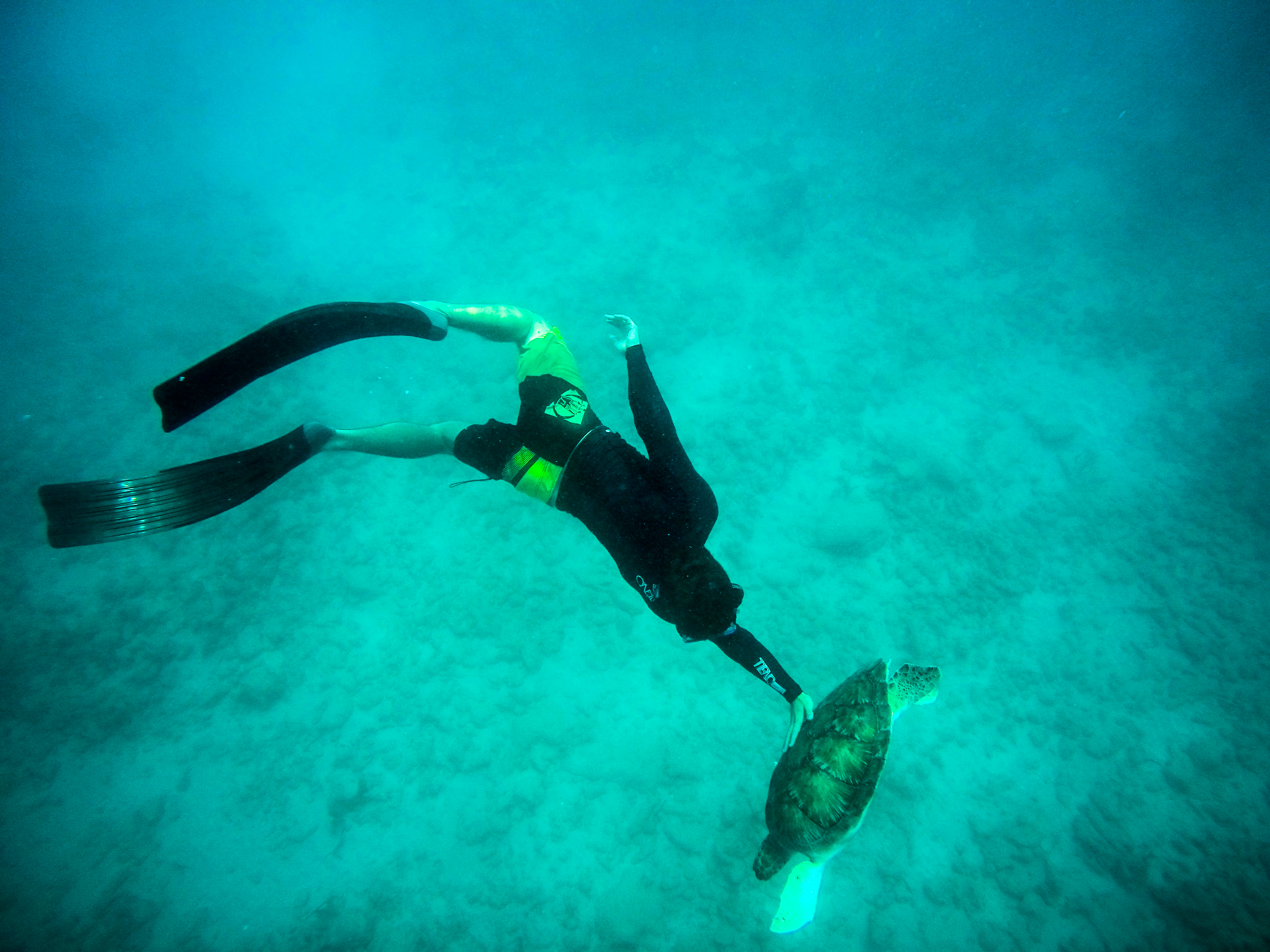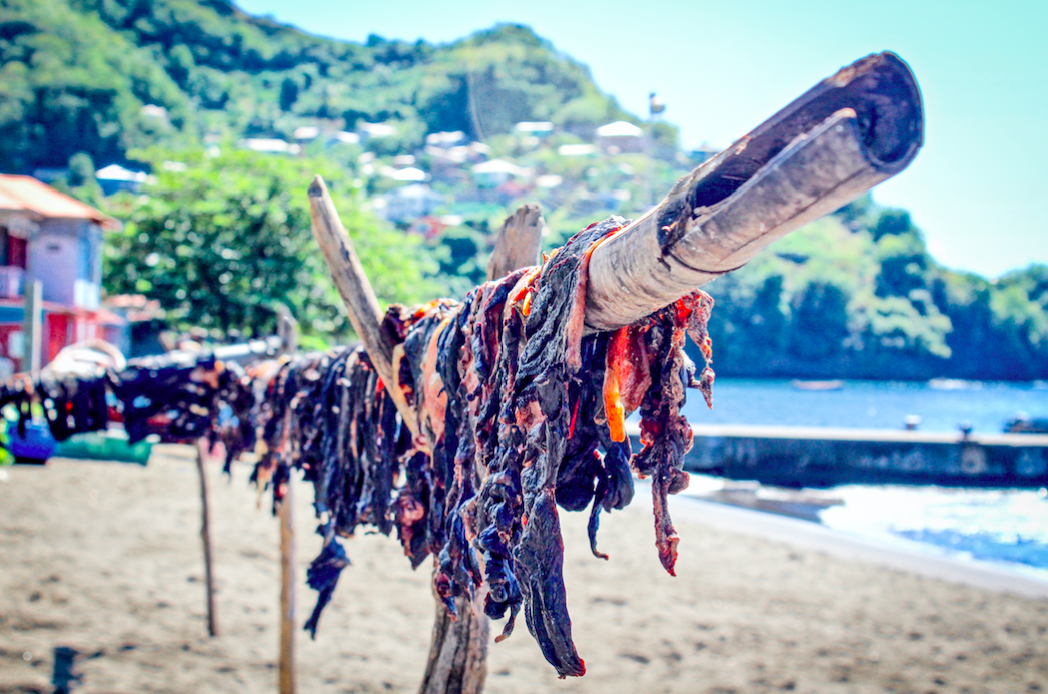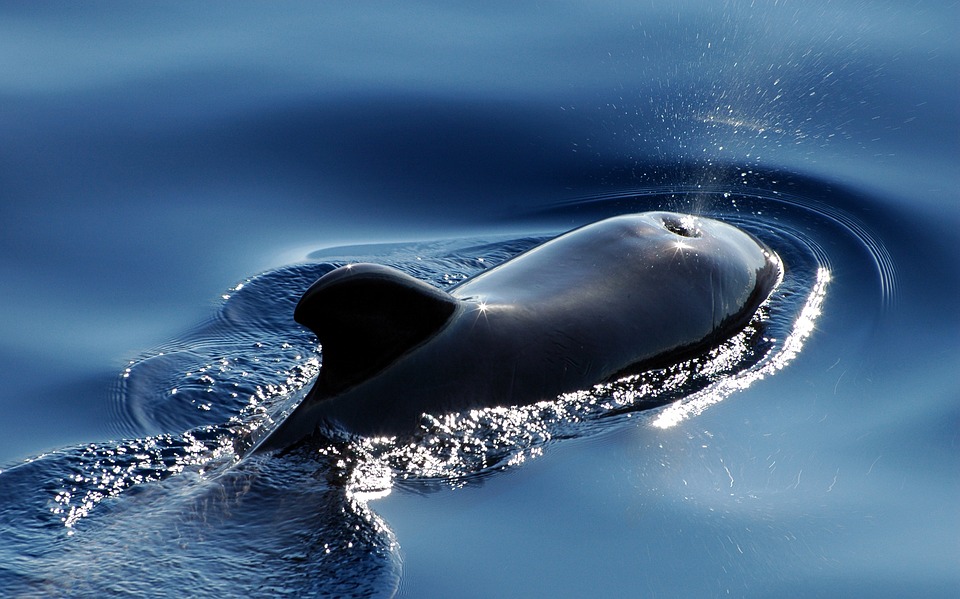Working to End Whaling in the Saint Vincent and Grenadines Hope Spot
May 25, 2017
Note, this feature contains sensitive content.
By: Marc de Verteuil
Hundreds of cetaceans are killed by fishermen in Saint Vincent and the Grenadines (SVG) each year. The species targeted includes humpback whales, orcas, bottlenose dolphins and pilot whales.
Adam Gravel, 28, is a Vincentian ocean activist and the founder of SalvageBlue, a NGO dedicated to establishing SVG as a Hope Spot.
Hope Spots sprang from the mind of marine biologist Dr. Sylvia Earle. She introduced the idea during a TED talk in 2009. The campaign is headed by Dr. Earle’s NGO Mission Blue and it receives support from National Geographic, Rolex and Google.
Gravel spent his childhood in the sea swimming with dolphins, turtles and sharks.

Sailing the Grenadines islands has given him an intimate knowledge and appreciation of the archipelago he calls home.
After careers in banking, human resources and personal fitness, Gravel wants to bring hope to SVG. To do so, he believes the killing of dolphins and whales must stop.
Marc de Verteuil: How many cetaceans have been slaughtered over the last decade?
Adam Gravel: According to the records I’ve seen, dated from 1981 to 2012 – 32 Humpbacks have been killed, and at least 9 have been calves.
According to the fishermen of Barrouallie, they kill between 2-300 pilot whales and dolphins per year. Over a decade that’s 2-3000 animals.
“Blackfish” is always available, and it’s not uncommon to find dolphins and pilot whales at the fish market in the Kingstown.
I know of at least 10 orcas kills, likely a bit higher, more like 20 in total I would imagine over the last 2 decades.

Marc de Verteuil: At what age did you start to care about the whale slaughter in St Vincent?
Adam Gravel: The first time I saw dolphins was in the wild, miles offshore in the deep blue. When I was a little boy, my father would take me and my sisters out in our boat to swim with dolphins.
At about 7 years old, maybe younger, my father took me to the fish market to buy bait fish.
While he looked for fish to purchase, I wandered onto the docks where I found a fishing boat with about 6 dolphins piled on top of each other with harpoons sticking out of their sides.
The dolphin on top was very much alive, though its skin and eyes were baked dry by the sun.
When I asked why didn’t they put it out of its misery, I was told it was to keep the meat from spoiling.
A few years after the dolphin incident, we were out on our boat, and we happened across the whalers who’d just killed an endangered Bryde’s whale calf. This further galvanised my desire to end whaling.

Marc de Verteuil: Give us a short description of the whale slaughter in SVG.
Adam Gravel: Whaling began in SVG over a century ago, in the late 1800’s.
It’s practised by two groups, one in Bequia that hunts Humpback whales exclusively, and the other in Barrouallie who routinely and indiscriminately hunt all species of dolphins; orcas, pilot whales, bottlenose, spinners, whatever they come across that day.
Whaling here is barbaric. The kill time is long. Larger whales take a long time to die after being struck; smaller whales are intentionally kept alive in order to keep their meat from spoiling.
According to the IWC we are not allowed to kill mothers and nursing young, but the majority of the time, this has been the case.
The whalers in Bequia are also required to use old fashioned techniques such as wooden sailboats and hand thrown harpoons but they use speedboats with outboard engines.
In Bequia they use hand-thrown harpoons, and in Barrouallie they use shotgun mounted harpoon cannons donated by the Japanese fishing industry.
According to the fishermen, it is estimated that a few hundred animals are slaughtered in a good year. About a third of those harpooned, manage to escape capture but swim off into the horizon to bleed out, dragging mooring buoys behind them.
Our whalers have been granted an “aboriginal status” by the IWC, however, it’s misleading because the real aboriginal peoples of SVG were the Amerindian tribes known as the Caribs and Arawaks, who have zero history of whaling whatsoever. And neither do Africans.
Whaling was brought to these shores by American whaling ships, which recruited Africans and Irish settlers who are unarguably not indigenous to these islands in the way that the Inuit and Yupik are to Alaska and Canada or the indigenous people in Siberia or Greenland.
Marc de Verteuil: You retrieved orca fins from the sea at Barrouallie. Can you tell what led up to that event?

Adam Gravel: I got a call from a whaler one evening. They had caught some killer whales. By the time I got there, they had already dismantled the orcas and their body parts were scattered everywhere, in the sea, on the beach, their meat and blubber hung from bamboo rafters.
The first thing I noticed was the head of the infant orca being washed about in the surf. The whole town is a bone yard. There are cetacean skeletons everywhere! Skulls, vertebrae, abound.
What struck me the most that day was just how incredibly heavy an orca pectoral fin can be, easily over a hundred 100 lbs. It took all my strength to drag their body parts out of the water and onto the beach. I smelled like dead orca for days, no matter how many times I bathed, their tissue is extremely oily.
According to the fishermen I spoke with, they killed five orcas on that particular day, however, they have killed orcas many times before. The five orcas killed comprised the entire pod, including a juvenile and an infant.
The orcas were extremely friendly and curious. They came right up to the boats, stuck their heads out of the water to get a better look at the occupants, and even playfully pushed by boats around in circles.
They were so friendly and so close that the fishermen had to put the boats in reverse in order to create enough distance between them as to get a shot at the whales.
After they’d shot one, the others refused to leave until eventually they were all harpooned and killed. “Easy, easy targets”.
One whale, however, was brought back alive and was hauled onto the beach where it thrashed about violently in the surf as fishermen repeatedly stabbed it in the head with harpoons until it died.
According to the witnesses it took over an hour to die and the screams it made during this process were chilling and unforgettable.
Learn about Adam’s experience with whaling in the video below:
Marc de Verteuil: orcas are loved around the world. There’s even a movement to free captive orcas. How does this reflect on SVG?
Adam Gravel: Very poorly. Many people here defend the consumption of whales and dolphins and believe that it’s good for their health. Confront them with facts about mercury poisoning or their sentience and they will tell you it’s some sort of foreign conspiracy to stop them from eating whales.
We must go the same route as Dominica and create a competitive ecotourism product. Though I am optimistic, unfortunately, the reality of the situation is that most Vincentians are indifferent and oblivious to orcas in captivity, much less the fact that they have brains larger and more complex than our own.
It would be amazing if airlines and hotels took a moral stand and demanded that our government ends whaling, not just for the tourists who might witness it (which is has already happened) but for the whales and most importantly, the people consuming whale meat, which is contaminated with mercury and no longer food.
Marc de Verteuil: How do you plan to protect orcas and other cetaceans in SVG?

Adam Gravel: SalvageBlue is part of Mission Blue’s Hope Spots network to create a global wave of community support for ocean conservation that leaders and policy makers can’t ignore.
We are also starting an environmentally friendly offshore fish farming business, of which the whalers will get shareholding in return for giving up whaling, however, we are in the process of seeking funding.
If anyone reading this would like to help us end whaling, please do not hesitate to get in touch. You can visit our website to learn more.








Yes, indeed…These local people need other options to earn money. Fish farming seems to be a good idea. Hard task to get through it and find partnership with local fishermen. I hope they won’t be repulsive
Isn’t this a tropical island?
Can’t they grow fruit trees for far healthier food?